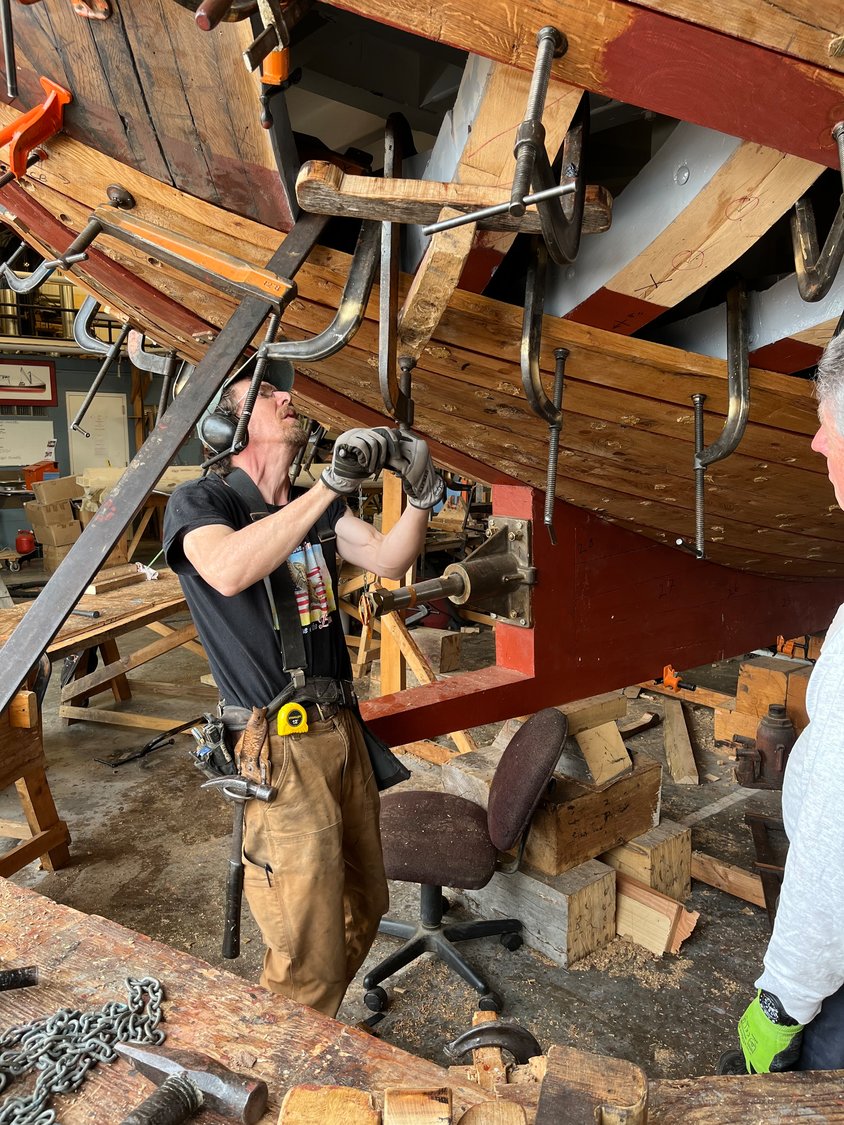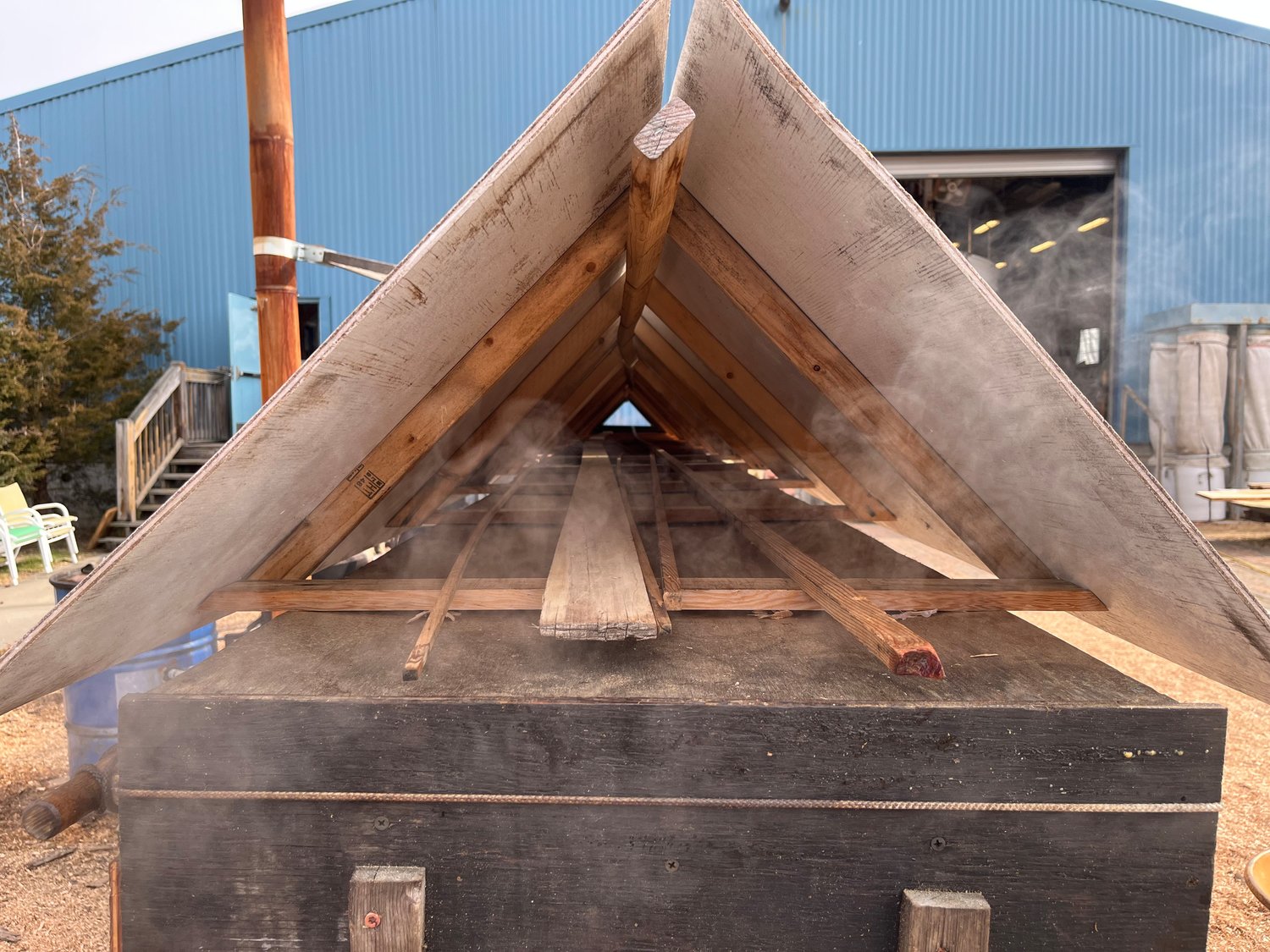Tuesday, April 23, 2024
 47.0°,
Fair
47.0°,
Fair
Historic oyster boat Ida May nears end of restoration
Residents of Oyster Bay are used to seeing the harbor filled with boats. By in early May, however, vessels will be sharing the water with a reconstruction of the historic oyster boat the Ida May.
The original Ida May was built in 1925, and was part of the Bayville-based Frank M. Flowers & Sons’ oyster fleet. One of the first oyster dredges to be powered by an engine, the ship worked local waters for roughly 75 years before being retired.
The ship was donated to the WaterFront Center by Flowers & Sons in 2003, but was in too poor condition to be repaired. Starting in 2009, a local group, the Christeen Oyster Sloop Preservation Corporation, which had previously helped restore the historic oyster boat the Christeen, worked with local politicians and raised money to build a full-scale replica of the Ida May.
Jack Hoyt, the secretary of the Christeen Corp. board, explained that the group was founded in 1992 for the sole purpose of refitting the Christeen. When members heard about the Ida May’s situation, however, they knew they had to help.
“Our mission is to preserve the tradition of wooden boat building in Oyster Bay,” Hoyt said. “Having the project take this long at least allowed us to have a continued exhibit open to the public, so they could see that traditional boat building methods work.”
The Ida May Project has been funded largely by government and charitable grants. State Sen. Carl Marcellino secured several grants that allowed the Christeen company to take the measurements of the original ship and prepare initial sketches and drawings, while the musician Billy Joel provided another grant via the Main Street Association.
One of the unique aspects of the Ida May Project is that many of those working on it are volunteers. They are mostly retired residents of Oyster Bay, and they include some former Flowers & Sons employees. They work in shifts alongside professional shipwrights, to streamline the working process.
George Lindsay, president of the Christeen company board and a volunteer, explained that having the volunteers there allows the professionals to focus on the more technical aspects of shipbuilding. There are roughly 15 volunteers who work in shifts two days a week, while the six professional shipwrights work every day.
Lindsay said that the ship was nearly done, scheduled to be in the water on May 3, and that he was confident that it would be seaworthy by then.
“Josh doesn’t take any shortcuts,” Lindsay said, referring to head shipwright Josh Herman, “and I’m sure that this Ida May is built 10 times better than the original. Nothing goes on the boat without getting double-checked.”
Herman took over for Dave Short, who stepped away from the project in 2012. Herman has overseen the ship’s construction, and in his time with the project it has made dramatic progress.
The ship’s floor beams have all been shaped and installed, and the steam box and other essential sections have been built and installed as well, as has the pilothouse, the covered section of the vessel where the steering wheel is located.
Herman and his crew are now overseeing the installation of the boat’s hull planks, and have completed roughly two-thirds of the job. Herman said that although every historical restoration project presents its own challenges, the work on the Ida May has largely been smooth sailing, and he and others were looking forward to getting her in the water in May.
“I’ve been doing this for 25 years, so I’m pretty stoic about the difficulties,” Herman said. “This project isn’t any more or less complicated or difficult than any other project. It just has its own set of challenges.”
HELP SUPPORT LOCAL JOURNALISM
The worldwide pandemic has threatened many of the businesses you rely on every day, but don’t let it take away your source for local news. Now more than ever, we need your help to ensure nothing but the best in hyperlocal community journalism comes straight to you. Consider supporting the Herald with a small donation. It can be a one-time, or a monthly contribution, to help ensure we’re here through this crisis. To donate or for more information, click here.
Sponsored content
Other items that may interest you









